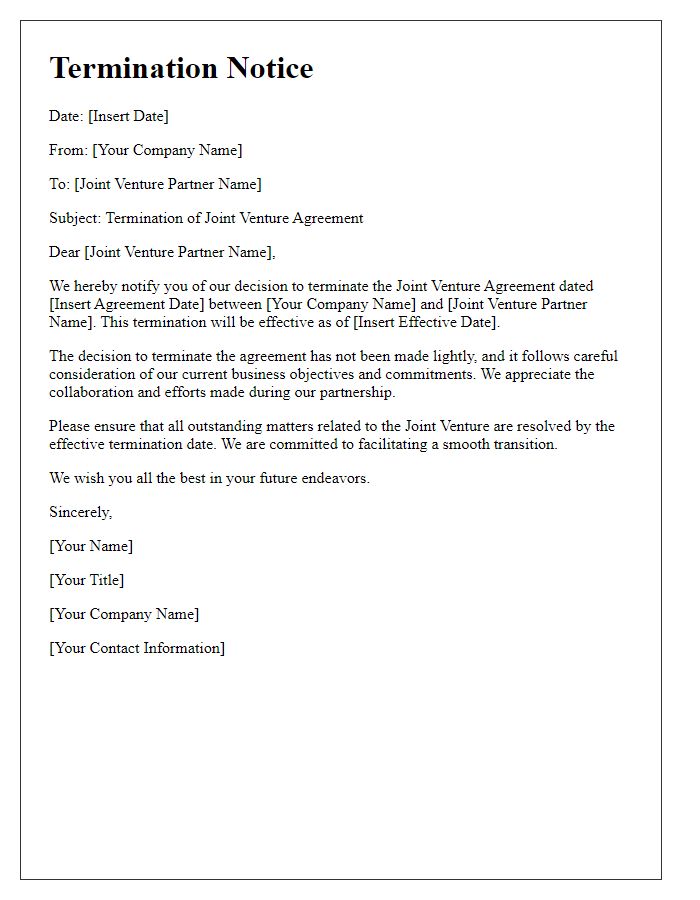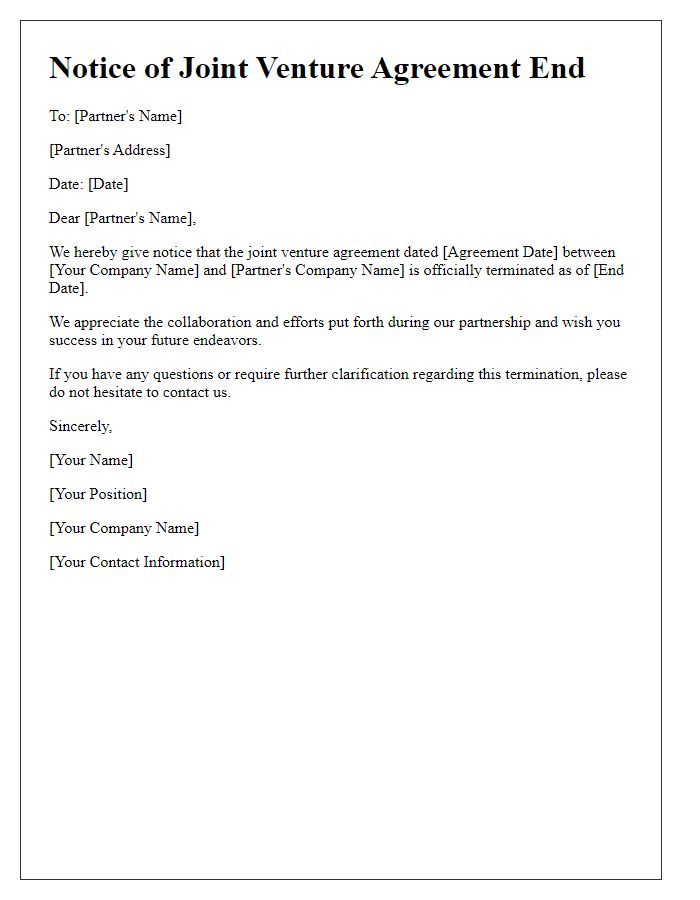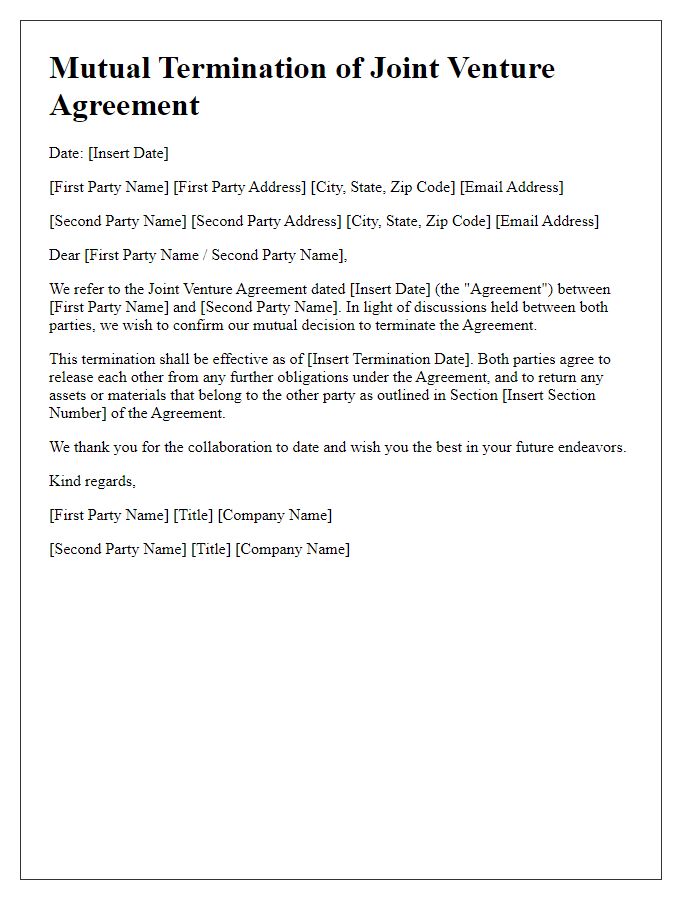In the ever-evolving landscape of business collaborations, there are times when partnerships reach a crossroads. Whether due to changing market conditions or differing strategic visions, concluding a joint venture agreement can be a necessary step forward. It's essential to handle this transition with clarity and professionalism to ensure all parties understand their obligations and the rationale behind the termination. Ready to learn how to navigate this process smoothly? Let's dive into the details!

Clear Identification of Parties
The clear identification of parties involved in the joint venture agreement termination is crucial for legal and operational clarity. This section should include the full legal names of all organizations and individuals involved, the respective addresses of the entities, and any relevant company registration numbers for identification. For instance, if Company A, registered as "ABC Technologies Inc." in California with registration number 12345678, is terminating the joint venture with Company B, registered as "XYZ Solutions LLC." in New York with registration number 87654321, both entities must be explicitly mentioned. Accurate identification eliminates ambiguity, ensuring all parties are held accountable and providing a solid foundation for documenting the termination process.
Precise Termination Date
A joint venture agreement termination marks the official end of a business collaboration between two or more parties. The precise termination date is crucial, as it outlines the final day when the business relationship is dissolved, often requiring comprehensive documentation. Parties involved must ensure that all terms of dissolution are met, including settled financial obligations, distribution of assets, and resolution of outstanding liabilities. This process typically involves legal counsel and adherence to local jurisdiction regulations. Proper communication among stakeholders is essential to avoid misunderstandings and facilitate a smooth transition post-termination.
Obligations Fulfillment Details
Termination of joint venture agreements requires a detailed understanding of obligations. Parties involved must review all binding commitments initially established. Each entity must outline responsibilities such as financial contributions, intellectual property rights, and operational duties. For example, in a technology joint venture, obligations might include the completion of product development milestones or financial audits by specific deadlines. Compliance with local laws, such as those governing partnership dissolutions in specific jurisdictions, is crucial. Disputes arising during the termination process may require mediation or legal proceedings, depending on contractual terms. Documenting all communications and decisions ensures accountability and clarity, potentially preventing future conflicts.
Confidentiality Responsibilities
Confidentiality obligations play a crucial role in joint venture agreements, ensuring the protection of sensitive information shared between parties. In situations where joint venture agreements are terminated, these confidentiality responsibilities remain in effect. Parties involved must continue to safeguard any proprietary information, trade secrets, and confidential data obtained during the collaboration. For instance, financial records, technical specifications, and client lists should not be disclosed to third parties, maintaining competitive advantage and trust. Violating these confidentiality terms can lead to legal repercussions (such as lawsuits for breach of contract) and damage to relationships with stakeholders. Compliance with the confidentiality clause is paramount even post-termination, reflecting the commitment to ethical business practices.
Dispute Resolution Clause
The termination of a joint venture agreement often arises from disputes that require a well-defined resolution process. An effective dispute resolution clause outlines the methods and procedures for resolving conflicts between parties involved. This clause may include steps such as mediation, where a neutral third party facilitates discussion to help parties reach a compromise, or arbitration, which involves an impartial arbitrator making a binding decision. Specified timelines for notification and response are also crucial, ensuring timely resolution. Furthermore, the clause may dictate the jurisdiction (the legal authority) governing disputes, such as a specific court or legal framework, which is vital for compliance with regional laws. Lastly, confidentiality provisions can protect sensitive information during the resolution process, preserving the integrity of both parties' interests.













Comments